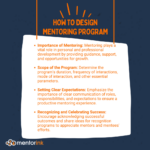
In the business world, success is not only achieved through individual performance but also strong connections within the team. At this point, employees who feel connected to the work environment and each other are the key to a successful business. Employee connection allows teams to work more effectively together and individuals to feel more connected to the workplace. But employee connection is more than just an exaggerated version of today’s work environments; it is considered the heartbeat of many work environments.
What is Employee Connection?
Employee engagement means creating strong bonds between individuals in the workplace. These bonds enable employees to communicate effectively with each other, work together, and feel part of the workplace community.
Employee connections at work also include social and emotional connections and connections to the company’s mission. Strong employee connections can lead to job satisfaction, increased organizational commitment, and better performance. At its core, it’s about creating a culture of mutual trust where individuals feel valued and part of something bigger.
10 Ways to Build Employee Connections in The Workplace
The company’s HR team and other department leaders can easily support employee engagement by implementing this actionable strategy.
1. Provide Open and Transparent Communication
Open communication is the foundation of strong employee connections. Transparent communication helps employees express themselves more freely and make efforts to build workplace-employee connections.
This style of communication should start at the top, with leaders who transparently share information about key aspects of the business environment, such as company performance, upcoming and ongoing initiatives, and the rationale behind changes. Create an employee engagement platform that provides easy ways for employees to share feedback on how their experience could be improved and what needs to be done to help them feel more engaged.
2. Encourage Teamwork
Teamwork is one of the most effective ways to build employee connections in the workplace. Group projects help employees get to know each other better as they work toward common goals.
Leaders can also chat with employees regularly. This creates employees who feel valued and increases their success in their jobs and teams.
3. Appreciate Employees
Providing regular feedback to employees and appreciating them creates a positive atmosphere in the workplace and increases motivation. A few words of thanks or appreciation can help foster employee connection. However, if you want to make progress in engagement and connection, relying on team members to provide enough ad hoc recognition is not a safe bet. Instead, your company should take steps to make it easier for the organization to recognize wins and celebrate successes.
4. Organize Social Events in the Workplace
Engaging in social activities in the workplace is the simplest way for team members to make connections. However, opportunities to socialize should be naturally reflected in employees. Mandatory activities or unnecessarily adding additional employees to a project only leads to frustration and inefficiency in the workplace.
Create environments that facilitate communication and teamwork, such as chat applications and project management solutions that employees can use across teams. You can create virtual or in-person team-building and social events for employees. For example, coffee roulette can be a good way to create a social event in the workplace.
5. Support Diversity Equity and Inclusion
Diversity, equity and inclusivity (DEI) are two of the cornerstones of establishing employee connections in the workplace. Having people with different cultures, backgrounds, and experiences in an environment where they feel valued allows them to establish strong bonds, both individually and within the team. To create this environment, all employees should be provided with equal opportunities, and different perspectives should be respected.
Organizing training, encouraging inclusive leadership, and providing platforms where employees can make their voices heard are just a few ways to create this culture. In this way, you can make the workplace feel a sense of belonging and create a more productive collaboration environment.
6. Set Common Goals
Common goals make it easier to work across teams. When employees work together toward specific goals, they aim to contribute to team success rather than just focusing on their individual performance. For example, setting a monthly sales target for a department or starting a social responsibility campaign throughout the workplace increases solidarity within the team. Clear and achievable goals strengthen collaboration by making people feel part of a community.
7. Strengthen Connections Using Technology
Remote or hybrid work models are essential tools for maintaining employee connections. Communication platforms like Slack, Microsoft Teams, Google Meet, or Zoom make it easy for team members to stay in touch at all times. These tools shouldn’t just be used for meetings; they should also be encouraged for informal chats and fun activities. For example, organizing online coffee breaks or creating a personalized “greetings channel” can strengthen employee social ties.
8. Implement Mentoring and Coaching Programs
Mentoring and coaching programs are important for both the professional and personal development of employees. Experienced employees guiding their colleagues who are just starting their careers and sharing knowledge and experience strengthens employee connections. Such programs should not be limited to just transferring information; they should allow employees to get to know each other better and trust each other.
Mentoring can be supported with regular meetings and follow-up processes, ensuring that connections are built on stronger foundations. Similarly, coaching programs help employees rediscover themselves and take a more active role in the workplace.
9. Develop Emotional Intelligence
Showing understanding and empathy are the foundations of workplace relationships. Employees with emotional intelligence should not only activate their own emotions but also aim to communicate effectively by understanding the emotions of others. In this context, training can be organized to develop emotional intelligence within the company, and a culture that encourages empathy can be created.
10. Implementation of Flexible Working Models
The balance between employees’ work and private lives is a factor that directly affects their productivity and loyalty. Adopting flexible working models is an effective way to balance employees’ private lives without having to carry them into the work environment. For example, switching to a remote working model or flexible hour applications allows employees to feel more free and valued. This type of flexibility makes it easier for employees to stay connected to the work environment even if they are physically in different places. At the same time, thanks to such applications, employees’ stress levels decrease, and their motivation at work increases.


